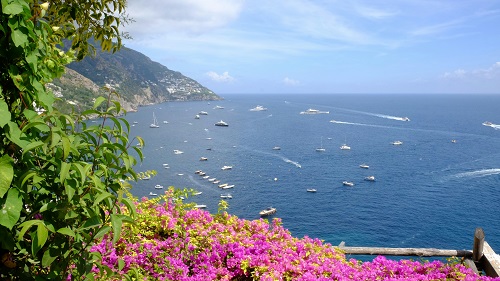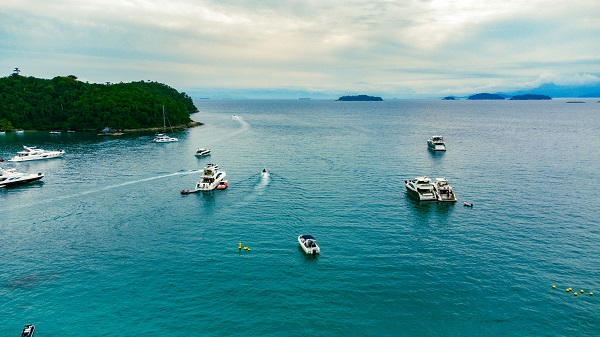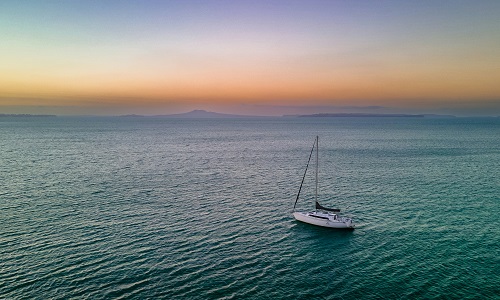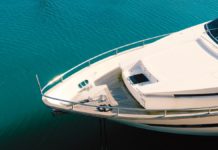
First thing first: where is a crew the most needed on a relatively small yacht ?
On a small yacht, the helm is crucial, requiring a skilled individual to navigate through varying conditions. Larger vessels between 65 to 80ft need a captain and deckhand with mechanical skills. The engine room requires monitoring for proper functioning. A cook/chef ensures crew and passengers are well-fed and comfortable. Remember, the bigger the yacht, the more crew needed for maintenance.
Reminder: not needing a crew for your yacht doesn’t mean you don’t need to have sailing skills or experience to run it

Mastering sailing skills is crucial for yacht owners who navigate solo. From understanding navigation and weather patterns to proficiently handling the vessel, all aspects of sailing demand expertise. Without a crew, the responsibility lies solely on the owner to ensure safe voyages. Whether maneuvering in tight spaces or managing emergencies, proficiency in sailing is essential for a smooth and secure experience. The knowledge and know-how of sailing are indispensable for a successful yacht charter, ensuring both enjoyment and safety on the water.
Read also: Skipper’s Job And Responsibilities: What You Should Know
How does the yacht type influence the need (or lack of) for crew?

Motoryachts will need crew the larger the boat size
The type of yacht significantly influences the necessity for crew members. Generally, as the size of the motoryacht increases, so does the requirement for a larger crew. Larger motoryachts, with their expansive dimensions and advanced amenities, often demand a more extensive crew to manage various tasks such as navigation, maintenance, hospitality, and safety. Conversely, smaller motoryachts may be more manageable with fewer crew members or even none at all, depending on the owner’s experience and preferences. Thus, the yacht’s size serves as a primary determinant of crew necessity, with larger vessels typically requiring a more substantial onboard workforce to ensure smooth operation and guest satisfaction.
Catamarans need less crew than sailboats
The type of yacht significantly influences crew requirements, with catamarans typically requiring fewer crew members compared to sailboats. Catamarans are known for their stability, ease of handling, and efficient use of space, thanks to their dual hull design. With their simplified rigging and often smaller sail area, catamarans are easier to maneuver and control, requiring less crew for tasks such as sail handling and navigation. Additionally, the spacious layout of catamarans allows for greater autonomy and comfort, reducing the need for constant crew assistance. Overall, the streamlined design and sailing characteristics of catamarans contribute to a decreased need for crew, making them an attractive option for those seeking a more independent sailing experience.
Sailboats need more crew because of the complexity of its rigging
The type of yacht significantly influences the requirement for crew members. For instance, sailboats typically necessitate more crew due to the intricate rigging and sailing operations involved. The complexity of managing sails, rigging adjustments, and navigating wind patterns often demands a larger team to ensure smooth sailing and efficient maneuvering. Conversely, motorized yachts, especially those equipped with advanced automation and user-friendly controls, may require fewer crew members or even be operated solo, as tasks such as navigation, propulsion, and onboard systems management are more streamlined. Ultimately, the design and operational demands of each yacht type play a crucial role in determining the necessary crew complement.
Read also: Beginner’s Guide to Chartering: Everything You Need to Know
Usual maximum length of yachts that can be operated alone


Most sailboats will require a crew above 35ft
Typically, the usual maximum length for yachts that you can operate without a crew falls below 35 feet. However, when it comes to sailboats, this threshold often marks the point where a crew becomes necessary. Sailboats reaching or exceeding 35 feet in length tend to require additional hands on deck due to the increased complexity of managing larger sails, rigging, and navigation systems. While smaller sailboats can often be handled by a solo sailor or a small crew, the larger ones demand more manpower to effectively handle the sails, maneuver in tight quarters, and ensure safe navigation, especially during adverse weather conditions. Thus, the need for crew on sailboats is closely tied to their size, with vessels over 30 feet typically necessitating a crew for safe and efficient operation.
Catamarans above 40ft will always need a crew

Typically, the usual maximum length for yachts that you can operate without a crew falls within the range of smaller vessels, generally staying below 40 feet. However, when it comes to catamarans, this threshold often shifts downwards, as even those exceeding 40 feet in length almost always require a crew. The inherent design and characteristics of catamarans, with their wide beam and dual-hull configuration, necessitate additional crew members to handle various tasks efficiently. Even larger catamarans, known for their stability and spaciousness, typically demand a crew to manage navigation, sail handling, maintenance, and guest services effectively. Thus, the need for crew on catamarans is more pronounced, with vessels above 40 feet almost always requiring a dedicated team for safe and smooth operation.
Read also: Yacht Rental With Skipper And Hostess Vs Fully Crewed Charters
Motoryachts above 40ft will usually require a crew
Typically, when considering the maximum length for yachts you can operate without a crew, it generally hovers around smaller vessels, often staying below 40 feet. However, when it comes to motoryachts, this threshold tends to shift upwards, as those exceeding 40 feet in length often necessitate the presence of a crew. Motoryachts of this size and larger commonly require additional hands on deck to manage various tasks efficiently, such as navigation, maintenance, hospitality, and safety. The complexity of systems and the sheer size of these vessels often exceed what can be managed comfortably by a single individual or a small group, thus prompting the need for a dedicated crew. While smaller motoryachts may be manageable without a crew, those above 40 feet typically benefit from having a skilled team onboard to ensure a smooth and enjoyable cruising experience.
Bests sailboats models that can be ran by the owner in complete autonomy


Jeanneau Brio: a 7m sailboat that doesn’t need a skipper
The Jeanneau Brio is a 7-meter sailboat designed for those who prefer to sail solo without needing a skipper. With its manageable size and intuitive design, the Brio offers sailors a sense of independence on the water. Its compact yet functional layout provides enough space for a comfortable sailing experience while keeping things simple. Whether cruising along the coastline or exploring calm waters, the Jeanneau Brio promises a rewarding journey for sailors seeking solitude and adventure.
Django 7: a 7m yacht perfect for a complete bareboat charter journey
Django 7 is a sleek 7-meter yacht ideal for a full bareboat charter adventure. Its compact size offers a cozy yet spacious experience for navigating the open waters. With ample room for a small group or couple, it provides a comfortable setting for exploring the seas independently. From its sturdy construction to its efficient design, Django 7 promises a reliable and enjoyable journey for those seeking a memorable sailing experience.
Read also: Sailing Upwind and Downwind – the Differences
Interesting catamarans/ multihulls models the owner is able to maneuver in complete autonomy
Edel cat 26 : a 9m cata that doesn’t need a skipper
The Edel Cat 26 is a 9-meter catamaran designed for those who want to sail independently without the need for a skipper. Its user-friendly design makes it accessible for sailors of various skill levels, allowing them to enjoy the freedom of navigating the waters on their own terms. With its spacious deck and comfortable accommodations, the Edel Cat 26 offers a relaxing and enjoyable sailing experience for solo adventurers or small groups alike.
Rackam 26: a 9m yacht with efficient performance
Rackam 26 is a 9-meter yacht known for its efficient performance on the water. Its design emphasizes functionality and reliability, making it a popular choice among sailors who prioritize practicality. With a focus on efficiency, Rackam 26 offers a smooth sailing experience, whether cruising leisurely or navigating challenging waters. Its size allows for easy handling while still providing ample space for onboard activities. Overall, Rackam 26 is a dependable option for those seeking a balanced combination of performance and utility in their yacht.
Read also: Our Favorite Power Catamarans To Charter In The BVI
Big motor yachts models that can be maneuver without crew
Prestige 42 Fly: a 12m motor yacht that doesn’t need a skipper
The Prestige 42 Fly is a 12-meter motor yacht designed for those seeking independent cruising experiences without the need for a skipper. With its sleek design and advanced technology, this yacht offers both comfort and control for navigating the open waters. Its spacious interior provides ample room for relaxation and entertainment, while its powerful engines ensure smooth sailing and swift travel to your desired destinations. Whether you’re exploring coastal waters or embarking on a weekend getaway, the Prestige 42 Fly offers a blend of elegance and functionality for self-guided maritime adventures.
Antares 42: a 13m yacht perfect for bareboat charter
The Antares 42 is a 13-meter yacht ideal for bareboat chartering. With its spacious layout and comfortable design, it offers a fantastic experience for those looking to sail without a crew. Its size provides ample room for relaxation and exploration, making it perfect for a leisurely cruise with friends or family.
Conclusion
In conclusion, when considering chartering the biggest yachts available without a crew, it’s crucial to remember that size isn’t everything. While it may be tempting to go for the largest vessel, it’s essential to choose a size that aligns with your sailing skills and experience level. Opting for a yacht that exceeds your abilities could lead to unnecessary risks and challenges. Instead, it’s wiser to select a size that you feel comfortable handling solo or with your group. If you’re unsure about your skills or want to relax and enjoy the trip without worrying about navigation, hiring a skipper is a practical solution. Ultimately, prioritizing safety and enjoyment over sheer size will ensure a more rewarding and stress-free charter experience.




